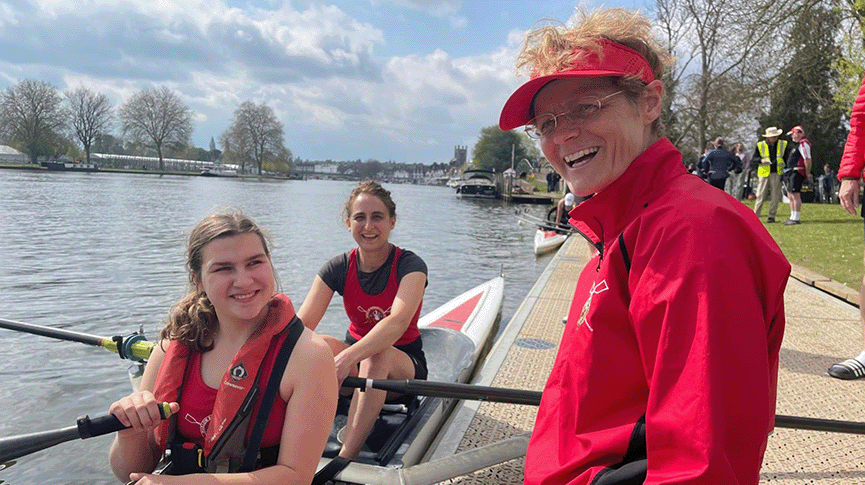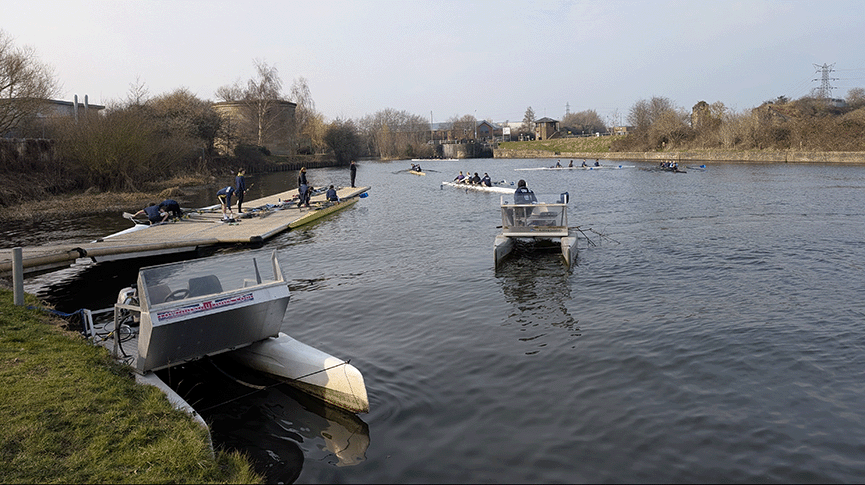Remembrance Sunday: a rowing odyssey on the River Somme
Olympic champion Martin Cross journeys along a French river synonymous with the conflict, paying tribute to two remarkable oarsmen who fought in World War One
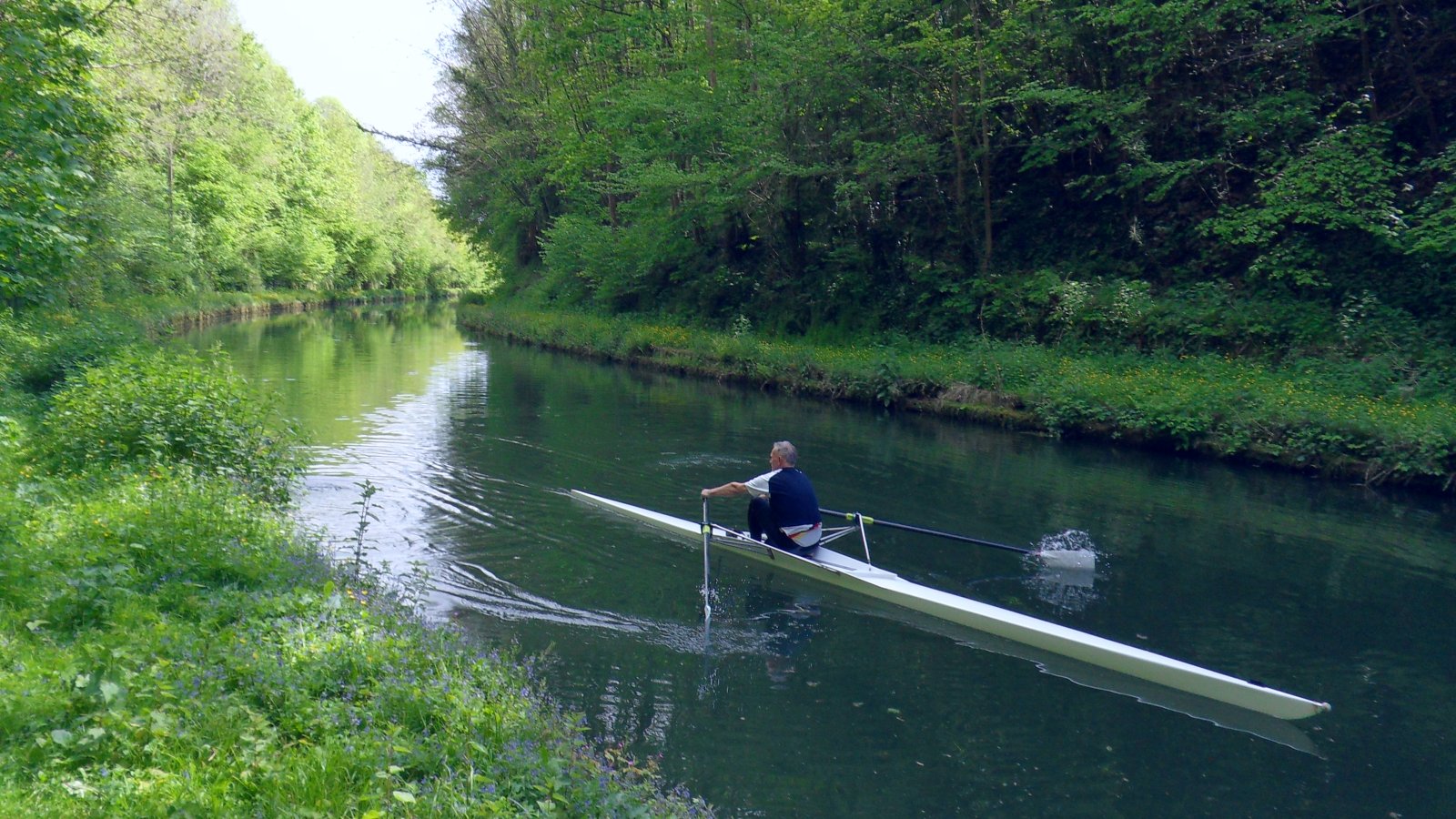
Martin Cross sculling on the River Somme
Just why was I in northern France scrambling down unfamiliar, steep, thickly wooded embankments, looking for a place to put my scull on the water below? Was I really lying horizontally, inching my boat under impossibly low bridges, or fighting fast tidal stream as the river finally flowed into the sea at the port of Saint-Valery-sur-Somme?
Sculling on the River Somme turned out to be a personal odyssey; through beautiful scenery, and cities. Taking in stunning memorials, as well as sculling through a landscape of old battlefields, punctuated by quiet cemeteries, small still lakes and – even now – unexploded shells.
Those who fought in the 1914-1918 War, especially those from Australia, Britain, France and Germany would never be far from my mind. But my focus was on two remarkable oarsmen: both Olympic champions, both decorated for bravery and – like two bookends – both killed at either end of the Battle of the Somme: one on the very first day; the other, five months later on almost its final day.
The reason for my journey – over one hundred years after the First World War ended – lay in an attempt to answer the question: ‘Why should we remember a war that happened so long ago?’
I’ve taught and read about World War One for almost longer than I remember and visited much of the Western Front too. Yet the question still resonates, particularly because I feel less than comfortable looking at the conflict from an exclusively British-centred viewpoint.
Why should we remember a war that happened so long ago?
So to help answer that question, I decided to follow my heart, do what I love, get on the water and scull down the beautiful River Somme. There were many reasons why that river, above all others, presented itself as an obvious choice.
For many, what happened on 1 July 1916 – the first day of the Battle of the Somme – defines World War One. As night fell, the British Army’s ‘butcher’s bill’ was close on 60,000 killed and injured. The wave upon wave of troops that broke themselves on German defences have come to represent the ultimate futility and waste of trench warfare. That’s a view I want to challenge. Not least because it was not ‘just’ a British battle. Outside of the huge numbers of French soldiers involved, the offensive saw major contributions from the troops of Australia, South Africa, New Zealand and Canada. It also lasted until 13 November 1916.
My journey starts from the small bridge that spans the narrow St Quentin Canal at Riqueval. There the canal – of which the Somme forms a part – cuts through a deep, thickly wooded embankment, before disappearing into a 5km long tunnel. With just a very rough path down the steep embankment, it’s difficult to get a scull down to the canal – let alone find somewhere to boat from. But the water was absolutely still and flat calm. Back in 1918 the canal formed part of the German Army’s apparently impregnable Hindenburg Line.
For many, what happened on 1 July 1916 – the first day of the Battle of the Somme – defines World War One
It was a 20km scull to Peronne on the Somme with more than just a tinge of adventure – not least because in the evening, none of the four locks were manned. But what was really compelling was the absolute serenity of the Somme. At the start of May, spring blossoms had formed a carpet along its surface which my boat cut through and my blades left satisfying swirls in.
In truth, from the water, there wasn’t much that reminded me of the war, but it still felt as though I was doing something significant.
The next day, up on the Flaucourt Plateau and driving the same route, it was a different story. I was particularly struck by the graves of French troops from North Africa who’d played such a prominent role in the Somme campaign.
From Cappy – where the German air ace Manfred von Richthofen, the ‘Red Baron’, took off for his last flight in 1918 – the battlefield visitor has to leave the Somme and head north towards the British section of the front line. En route, I stop and pay my respects in the sombre German cemetery just outside Fricourt: a British target on 1 July. Approaching 200,000 Germans died defending their lines or counter-attacking between July and November 1916. A total of 17,000 of them have been laid to rest in Fricourt. I had tried to research the names of German oarsmen who might have served on the Somme but had not discovered any before my visit.
The same was not the case for British oarsmen. And I wanted to focus on two men in particular: Captain John Somers-Smith, killed attacking Gommecourt on 1 July 1916 and Lieut-Commander Frederick Septimus Kelly, who lost his life attacking the village of Beaucourt-sur-L’Ancre on 13 November 1916.
Somers-Smith had won Olympic gold at the 1908 Games in London as part of the British four. Up near the village of Gommecourt, on the very northern part of the Somme offensive, there was nothing resembling a river, or so much as a stream. The countryside there today is very open: perhaps a reason why all attacks on that day failed.
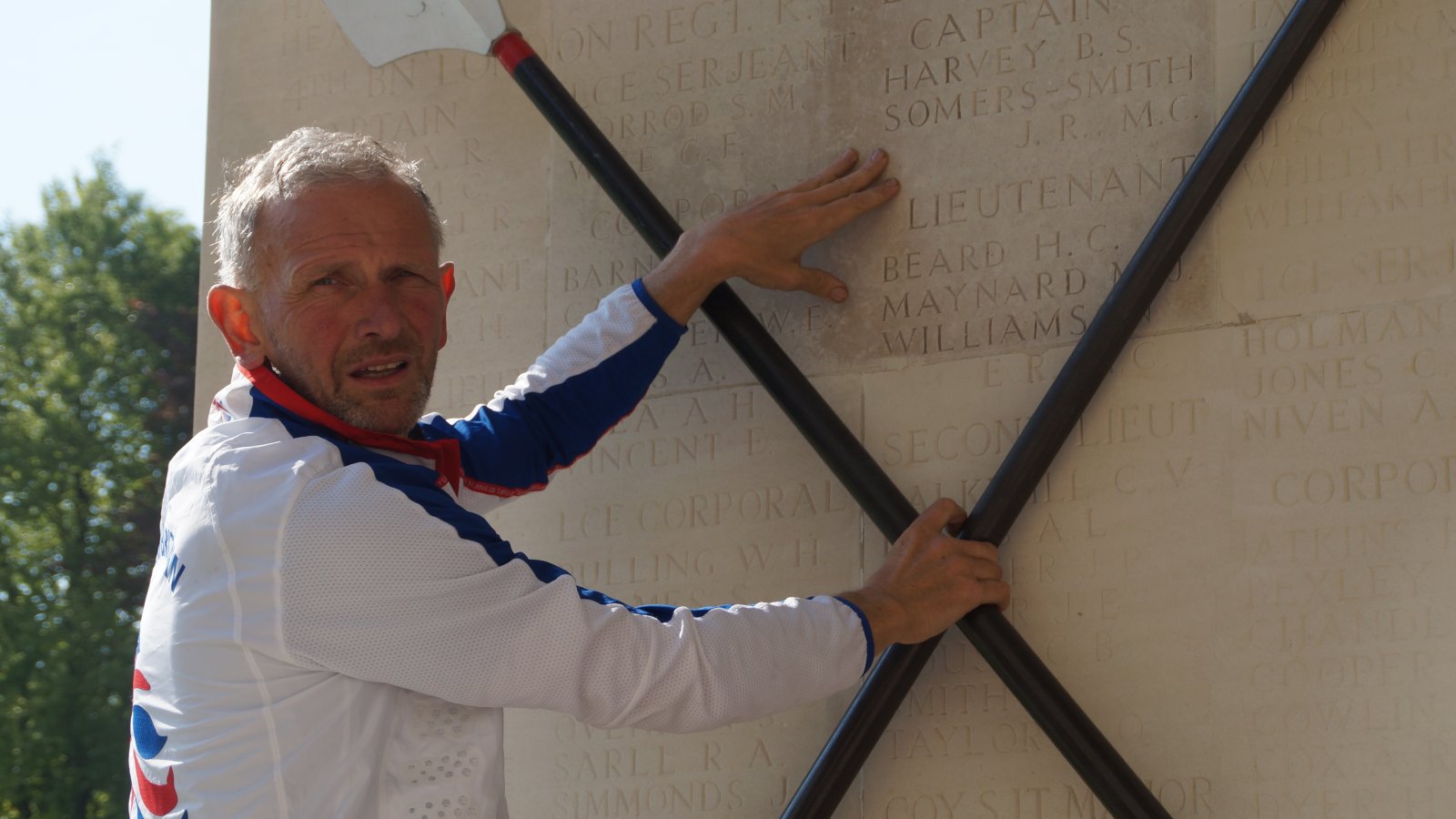
The body of Somers-Smith was never found and his name is one of the 72,191 commemorated on the huge memorial to the missing, designed by Sir Edwin Lutyens, up on the Thiepval Ridge. I make sure I wear my Olympic tracksuit, take my sculls and a single rose to pay my respects.
In contrast, FS Kelly lies buried not far from where he fell in Martinsart Cemetery. By many accounts, he was the best and most stylish rower and sculler of his day. He won the Diamonds three times at Henley and was part of the British eight that took gold in 1908. But the Australian-born Kelly is perhaps more noted for his beautiful compositions.
FS Kelly was the best and most stylish rower and sculler of his day
His cemetery is like no other I’d ever visited, in part because the gravestones are all stained a deep brown colour. I spend some time by his grave. It was made all the more atmospheric by listening to his incredibly beautiful and equally haunting Elegy for Strings, composed in 1915 to mark the death of his great friend, the poet Rupert Brooke. You can listen to it here.
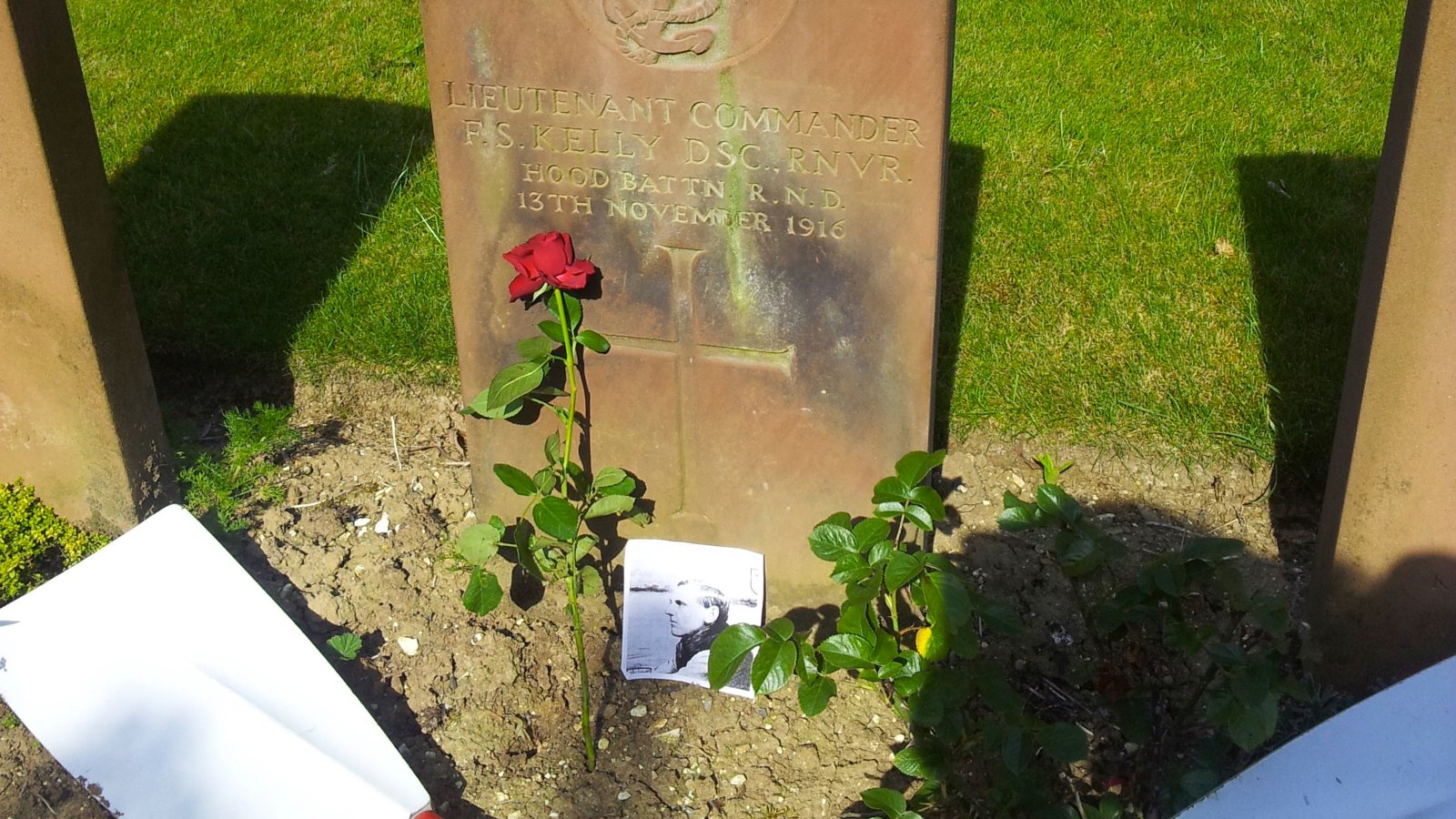
I also wanted to see if I could get a few strokes in on the Ancre – at Beaucourt where Kelly was killed. But the river, which runs through the valley below Thiepval, is little more than a small stream. I struck lucky and found a small fishing lake formed by the Ancre. I can’t imagine anyone else would have sculled on it before. To me, those few strokes that I was able to pull on the lake felt like a significant act of remembrance to a remarkable man.
So as I tied the boat on the roof of my car for the last time, I thought of the question I started with: ‘Why remember?’. Instead, another came to my mind: ‘What is it that we choose to remember?’.
The battlefields, cemeteries and river exist – in the present – as a vibrant part of the culture, leisure and tourist industry of northern France. Perhaps it is for us, as individuals, to make sense of them now in the multicultural world in which we live.
This article originally appeared in Rowing & Regatta magazine.


